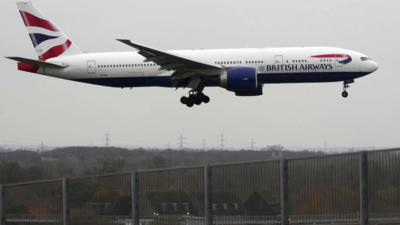British Airways, operating for over a century in India, is set to expand its routes and flight frequencies, while also capitalising on cargo opportunities emerging from the proposed India-UK free trade agreement (FTA), according to Chairman and CEO Sean Doyle.The airline currently operates 56 weekly flights across five Indian cities- including thrice-weekly services from Mumbai, twice-daily flights from Delhi, and daily operations from Chennai, Bengaluru, and Hyderabad. This marks a significant increase from the 46 weekly flights it operated pre-pandemic. Calling India the airline’s largest single market outside the United States.In an interview with news agency PTI, Doyle said, “India is a very, very important market for British Airways. We’ve seen a 25 per cent increase in capacity compared to pre-pandemic levels, and we plan to continue expanding routes and frequencies.”British Airways will reintroduce first-class service on the Mumbai–London Heathrow route from October 27, using its Boeing 787-9 aircraft. This marks the return of the premium offering after a five-year hiatus, complementing the existing business, premium economy, and economy cabins.Doyle noted the growing importance of India in the airline’s global strategy, especially as demand for air travel surges among the country’s expanding middle class. “We want to be part of the growth of aviation in India. About 2,500 people work for British Airways in India. We see growth here that’s unprecedented in a generation,” he said.Increased cargo traffic is also expected under the FTA, particularly from niche export segments not just from the UK but also from surrounding markets served by British Airways.Commenting on the broader trade landscape, Doyle emphasized the importance of liberalized trade frameworks. “I was extolling the positives of a free trade agreement between the UK and India. Anything moving in the opposite direction needs to be examined closely,” he said, referring to uncertainties around tariffs and trade policies.British Airways is also preparing for future growth through fleet expansion, with a focus on acquiring more wide-body aircraft to support long-haul connectivity. India remains a strategic priority within this plan.He noted distinct travel trends across Indian cities. While Delhi and Mumbai predominantly cater to origin-and-destination (O&D) traffic between India and the UK, Bengaluru and Hyderabad are largely transit points for passengers heading to the United States.“If you look at markets like Bangalore and Hyderabad, that still is very much driven by connecting traffic into the United States… as we launch more services into India, and as we add more services into the United States, we give people more of a one-stop solution to get to more places than they can with any other carrier,,” Doyle added.
Trending
- US-China trade negotiations: Oil prices steady as investors eyes trade talks in London; Brent holds above $66
- Gold price prediction: What’s the gold rate outlook for June 9, 2025 week – should you buy or sell?
- ‘Bullish on Indian market’: European plane maker ATR eyes expansion in India; in talks with airlines
- ITC bets on buyouts to grow food business
- Maharashtra, Karnataka account for 51 pc of FDI in India in FY25: Govt
- Over a dozen companies line up IPOs in 3-6 months
- Auto companies seek govt help for magnet imports
- China tightens supply: India’s auto industry seeks govt help on rare earth magnet imports; key EV parts impacted
- Mohandas Pai flags lack of domestic capital for Indian startups; urges policy overhaul; calls for stronger R&D support
- Trump-Musk rift rattles Wall Street; Tesla share slide exposes market fragility; major indexes take a hit

